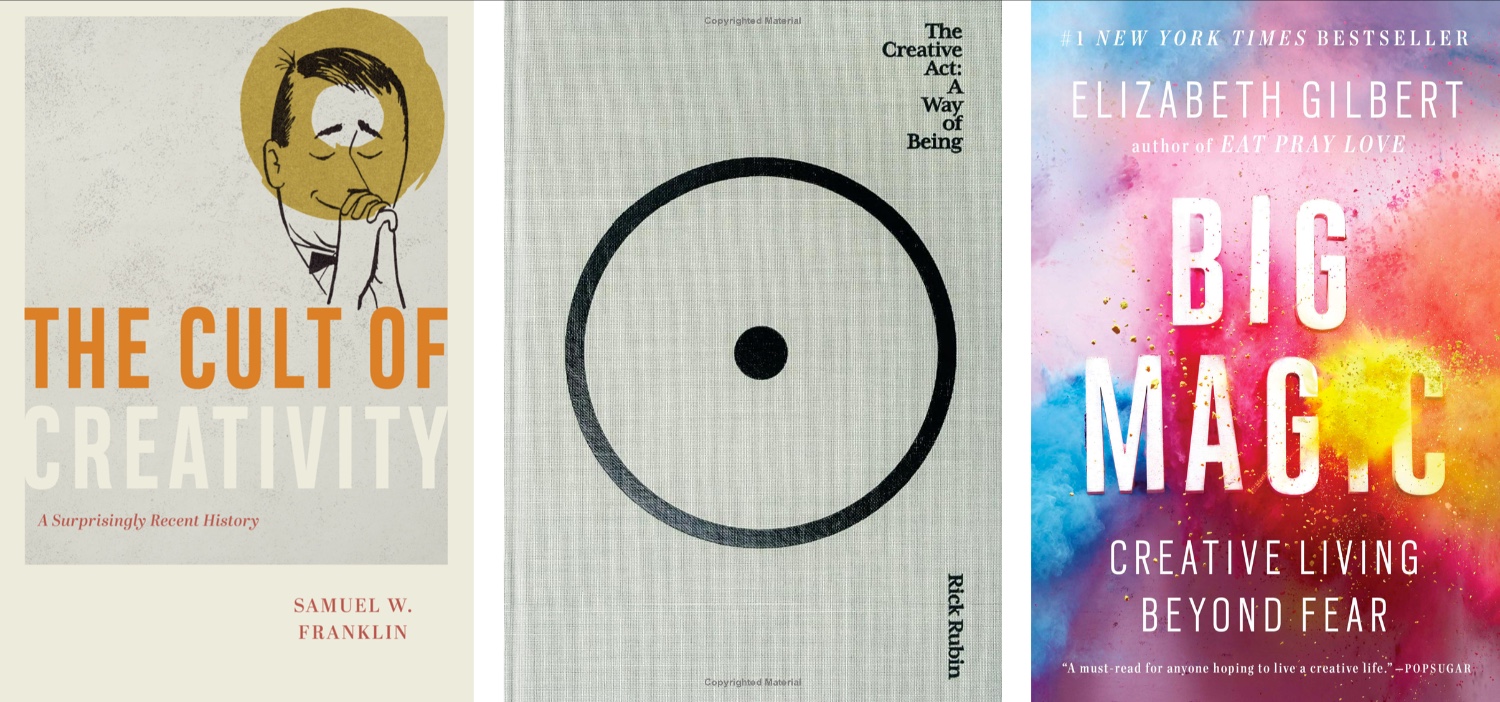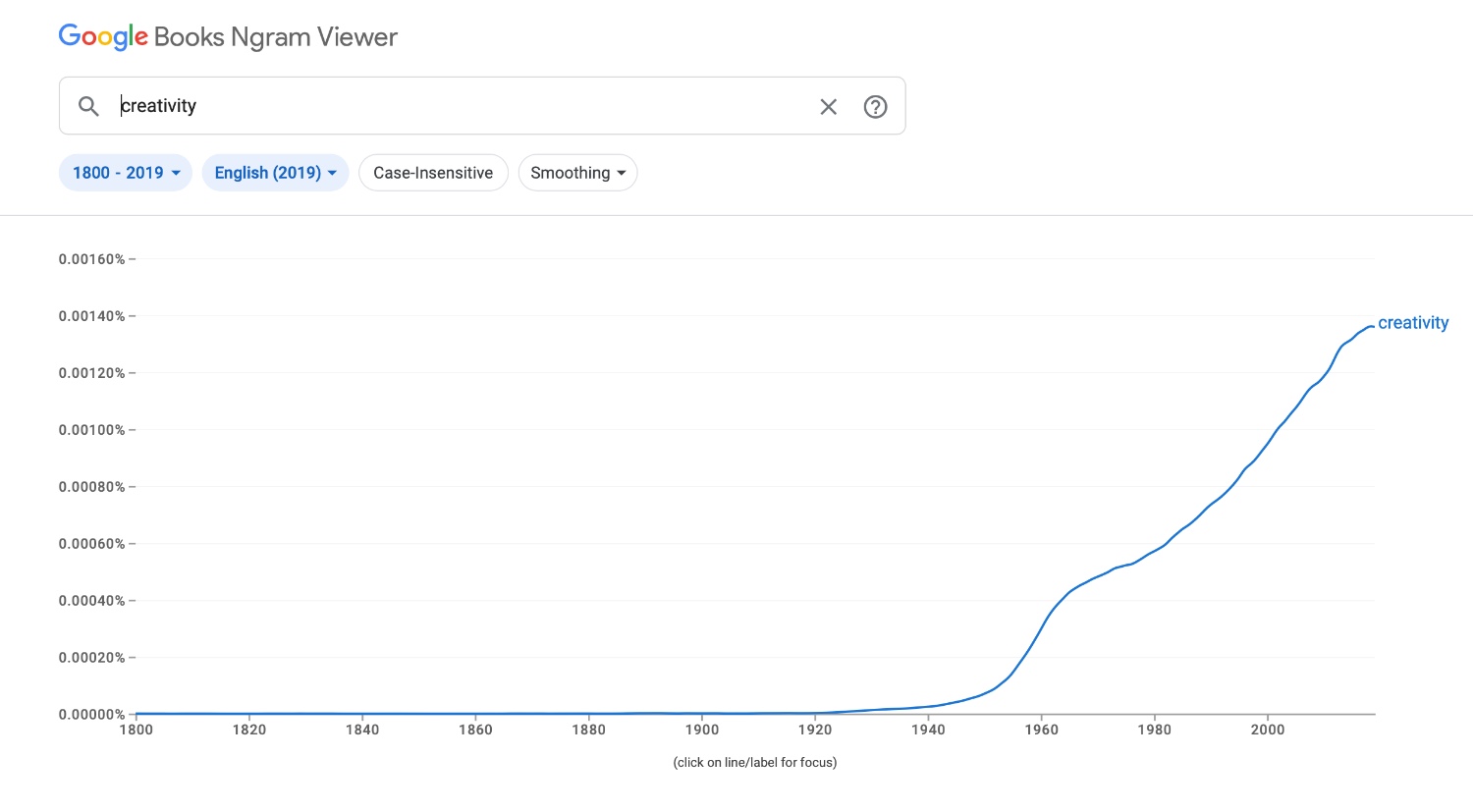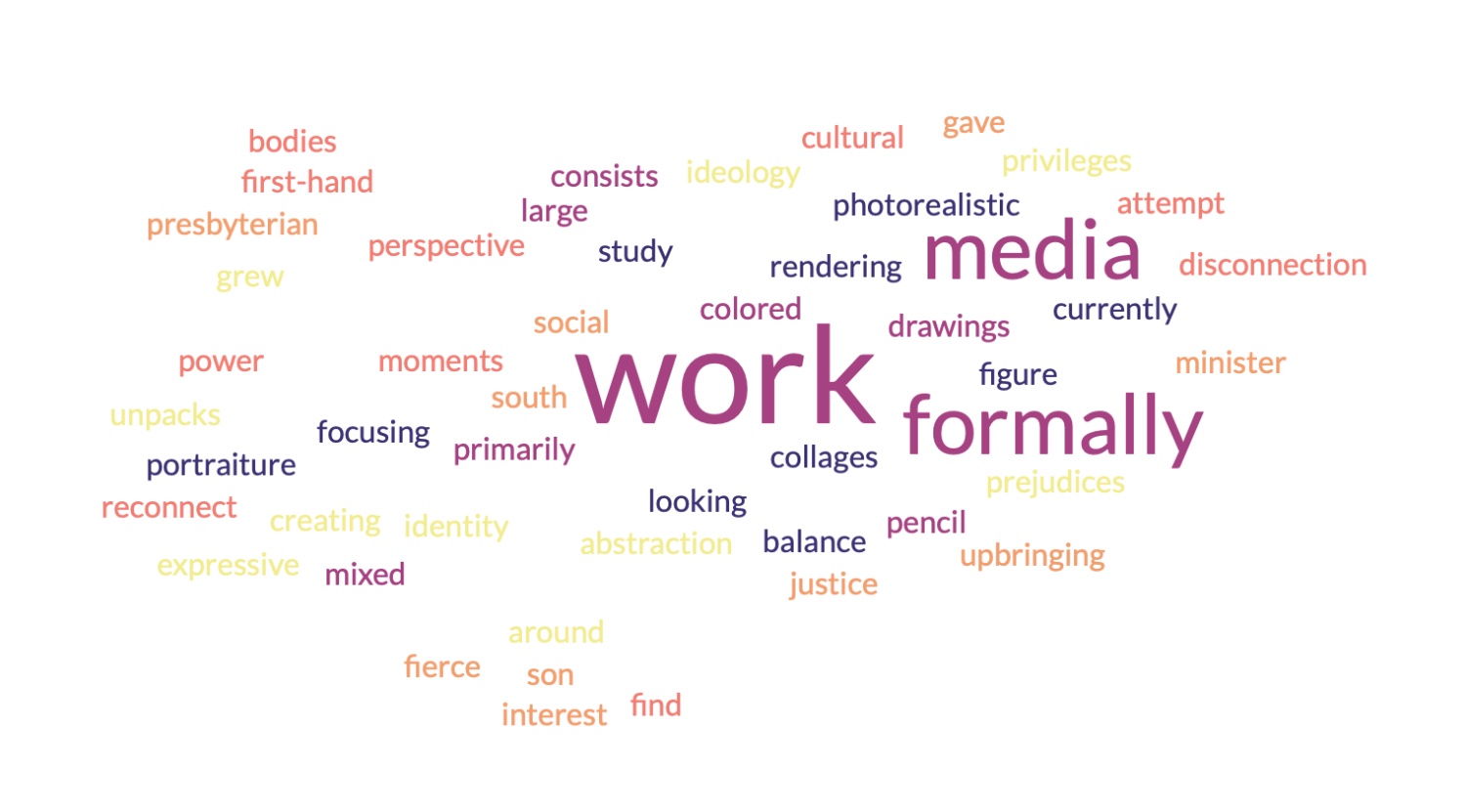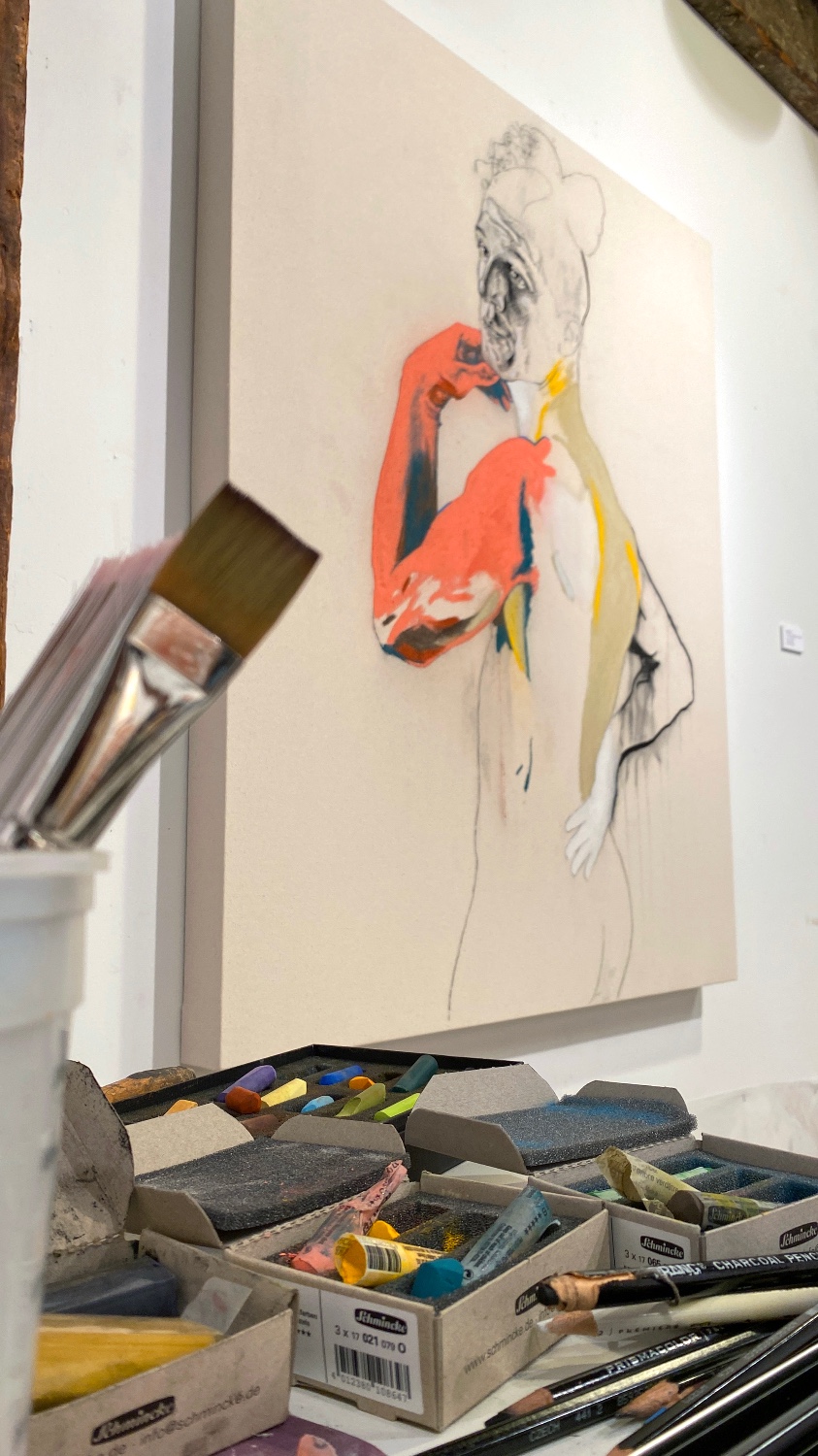
Creativityism: A brief history
Published September 6th, 2023 by Russ White
Three books and a studio sabbatical reveal the surprisingly recent development of "creativity" and the value of all that "work" artists are always talking about
 Support your local indie bookstore: The Cult of Creativity, The Creative Act, Big Magic
Support your local indie bookstore: The Cult of Creativity, The Creative Act, Big Magic
There must have been a time in my life when I made art in utter silence, a time before boomboxes and Walkmen and Spotify. Surely some Ninja Turtles and Spaceman Spiffs got scrawled out onto spiral-bound notebook paper to the sound of nothing more than the thoughts in my head, but those days are long gone. From the Case Logic of cassettes I collected in middle school to the cranky comedians on podcasts that keep me company in the studio today, my creative output has almost always had a soundtrack.
Sometimes they affect — even infect — the work itself. I can look at some old drawings and actually hear specific conversations or albums that accompanied their creation: a little Ron Funches during the torso, a little Radiohead while I drew the knuckles. One particularly bad choice was deciding to stream The Rise and Fall of the Third Reich while drawing a detailed map of an elementary school playground for a client in Florida, which is a sentence with hardly any good words in it. I’m not sure if it was the horrors of the Nazis, the author’s recurring homophobia, or the fact that I’m not an architectural landscape artist, but the project was a simmering misery throughout.
Though music likely facilitates a flow state more effectively, podcasts have become my standard in the studio. They’re sort of like doing homework on autopilot, learning by osmosis — like when Keanu Reeves plugs into a dentist’s chair in The Matrix and announces shortly thereafter, “I know kung fu,” except for me it’s more like “I just listened to a 4-hour biography of Ronald Reagan narrated by two British history nerds.”
So it happened recently that an artist friend of mine forwarded me a podcast recommendation: an episode of NPR’s Throughline featuring an interview with Samuel Franklin, author of The Cult of Creativity. Franklin's premise, in short, is that the concept of “creativity” as we understand it — as one of those innately human ingredients — actually originated in post-World War 2 America as a way to bolster capitalist production. The word itself seems to have been popularized by Cold War era psychologists, specifically JP Guilford, the president of the American Psychological Association, who gave a speech in 1950 urging his field to study creativity as a way to differentiate and quantify human ingenuity in the dawning age of computers and communists.

A Google Books chart showing usage of the word "creativity" in written works. The earliest known instance is from 1875, but the word barely registers until 1950.
In a New Yorker review of Franklin’s book, Louis Menand sets the stage: “The SAT, which was introduced in 1926 but was not widely used in college admissions until after the Second World War, is essentially an I.Q. test. It’s supposed to pick out the smartest high-school students, regardless of their backgrounds, and thus serve as an engine of meritocracy. Whoever you are, the higher you score the farther up the ladder you get to move. Franklin says that, around 1950, psychologists realized that no one had done the same thing for creativity. There was no creativity I.Q. or SAT, no science of creativity or means of measuring it. So they set out to, well, create one.”
It doesn’t seem as though they succeeded (“They ran into difficulties almost immediately,” Menand writes), and of course the concept of standardized testing as a means for meritocracy has been thoroughly debunked. But as Franklin explains in the podcast, soon the buzzword of creativity had been adopted by ad agencies and corporate sloganeers as a vital skill in the white collar fight against communism — to cultivate “creatives” as coal for the economic engine: to innovate, generate, and advertise the stuff of retail and industrial capitalism.
“Creativity” — the amorphous, aspirational quality we so value today— was itself an invention, as Franklin’s scholarship shows. In the book, he follows a handful of creativity researchers and evangelists who helped direct focus onto the subject across science, industry, advertising, education, and the military in the two decades following Guilford’s speech. “Over the next ten years,” Franklin writes, “the number of new books and articles on creativity matched that since the advent of the psychological profession. That number doubled again by 1965, and once more the following year. The major psychological journals were flooded with study after study on ‘creative ability,’ ‘creative behavior,’ and ‘creativity,’ fed by money pouring in from the National Science Foundation, every branch of the military, and education agencies and philanthropic foundations like the Carnegie Corporation.”
Franklin’s book, which I plowed through back at home after listening to the podcast, is primarily a social history, and a thoroughly researched one at that. (He documents the birth of “brainstorming,” for instance, named not after thunderclaps of inspiration but rather in the sense of storming a beach.) But the book is also an argument against individualism and innovation as our most valuable traits. As he explains flatly in his conclusion, “Cults of innovation, growth, and disruption are literally killing us.”
His prescription is to foreground other values instead: models of community-minded maintenance and care, for instance — taking “creatives” off of our pedestals above other callings and professions. It’s also interesting to see how tightly creativity was interwoven with many of the other myths at the heart of the American experiment: from its eugenicist origins in psychometrics, to its purveyors’ snake oil salescraft, to the focus on its use as a means of bolstering productivity in the office, the lab, and the marketplace.
“The efforts to understand creativity were always about the ability to increase it,” Franklin writes. In the end, he puts it more starkly: “The concept of creativity never actually existed outside of capitalism.”
When my buddy sent me the podcast link, he made a joke about jumping off the roof of his studio building after listening to it. Happily, my studio is in a basement, so I did not share the temptation. I just kept drawing and listening.
By the end of the episode, Franklin attempts to explain the problems with creativity as a concept — an uphill battle for something both so entrenched in our culture and so vague in its definition. “One of the things that ‘creativity’ does,” he says, “is to make every new thing into an equivalent product of ‘creativity.’ And that has the effect of taking away our ability to ask ourselves what should be created and what should not be created.”
He’s not wrong, but after an hour of listening to creativity get dragged across the gravel while I sharpened my colored pencils and made my little pictures, I went in search of a counterpoint. Musical guru Rick Rubin’s new book took up the challenge from the very beginning. Chapter one of The Creative Act: A Way of Being, narrated by the bearded Buddha himself, opens thusly:
“Those who do not engage in the traditional arts may be wary of calling themselves artists. They may perceive creativity as something extraordinary or beyond their capabilities, a calling for the special few who are born with these gifts. Fortunately, this is not the case. Creativity is not a rare ability. It is not difficult to access. Creativity is a fundamental aspect of being human.”
It was no small task that day to try to refill the balloon that Franklin had popped, and the first hour or so of Rubin’s audiobook felt more like a cavalcade of koans than a coherent counterargument. His stories of working with musicians in the studio are brief and illustrative, largely stripped of atmosphere and detail, as succinct and anonymous as possible in the service of each lesson. Still, though, I found myself nodding along to several passages. There is some good shit in there, especially pertaining to the practicalities of a creative practice.
“One of the best strategies is to lower the stakes,” he says. “We tend to think that what we’re making is the most important thing in our lives, and it’s going to define us for all eternity. Consider moving forward with the more accurate point of view that it’s a small work, a beginning.”
Or this one:
“Find sustainable rituals that best support your work… Instead of creating only when the mood strikes, or to start each day with a question of how and when you’re going to work on your art, put the decision-making into the work, not into when to work.”
There’s another word that’s worth considering: work. The art world is lousy with it. You’ll find no shortage of five-dollar phrasing in artist statements, particularly as we “interrogate liminality,” “decode process-based actualities,” or whatever the fuck it is that we claim to be doing. But easily the most used — and possibly most pretentious — chestnut of them all is work. Pasting my own brief artist statement into a word cloud generator renders its verdict loud and clear in a purple sans-serif:

Poor lowercase “presbyterian” hovers in orange, while the dreadfully pompous “unpacks” barely registers in a sour, sickly yellow. But this is what we do as artists: we work on our works, hoping they work on a variety of levels — formally for sure (tied for second in my own word cloud), but possibly even doing the work of healing or investigating or protesting or proselytizing. We lean hard on that word, almost as if to preempt criticism, to avoid the question that Franklin brings up about what “should” and “should not” be created.
If I could venture a defense from my own experience, I’d argue that all that work we do, at its most useful I think, is on ourselves. It’s a form of audience-facing self-help, to one degree or another. The artworks that result, in essence, are documents of that process; you could even consider them proof of the work rather than the work itself. The art is also, coincidentally, more stuff — quite often stuff that’s for sale. The word is even built into the product description itself: artwork.
This points us back to commerce, and the capitalist underpinnings of the creativity with which we’ve been acculturated. “You know, they say that necessity is the mother of invention,” Franklin says at one point in the podcast. “But in the 1950s that really kind of flipped, and you started seeing companies trying to produce new products just for market share.” I sometimes marvel at the same phenomenon in the art world: literally nobody asked for any of this stuff.
As both a creator and a consumer of artistic stuff, I’m comfortable ignoring the “should” and “should not” line of thinking altogether — that’s for the curators to figure out. Artists are not concerned with creativity; we are concerned with work. It is one of our many privileges that our labor here in the artist’s studio is understood to be, if not heroic, then at least worthwhile. Certainly difficult. Likely noble, lol. It all falls apart when you take a snack break, paw open the carton of raspberries in your refrigerator, and consider what kind of difficult work was done to pick, pack, and ship all of those little morsels — and what a stunning lack of respect that sort of labor engenders.
My own day job — a year and a half in at this point working for the UMN Art Department — offers a benefit that to this point in my working life I had never been able to enjoy: paid vacation. It’s still a wild concept to me, and of course, my inclination is to cash in those hours and use them to — you guessed it — work.
And so I found myself, near the end of July, with an entire week to spend in my studio. A sabbatical of sorts; a studiocation. Armed with three large panels given to me by the same artist who would later send me down the “creativity” rabbit hole (shout-out to Thomas Gleaner, a friend for more than 20 years) along with a roll of raw canvas, a bunch of chalk pastels, and some plastic sheets for the floor, I decided to spend the week really getting after it. What developed I don’t yet have many words for, but it felt like a breakthrough and has already inspired the building and prepping of five more panels — to keep up the "interrogating" and the "unpacking" (and the eye rolling, on occasion). The new works are also, if I'm being honest, a little nerve-wracking to share, precisely because they are so new.
“Create an environment where you are free to express what you are afraid to express,” says Rubin at one point in his book. Later on he adds, “Sharing art is the price of making it. Exposing your vulnerability is the fee.”

A work in progress at the author's studio.
In other words, the fear is a good thing. But if you find fear is still an impediment, I highly recommend a third book for some excellent advice and insight: Elizabeth Gilbert’s Big Magic: Creative Living Beyond Fear. It sounds self-helpy (and it is), but man, it’s a humdinger. Her worldview includes an entire ecosystem of creativity itself. “I believe that our planet is inhabited not only by animals and plants and bacteria and viruses, but also by ideas." She's not speaking metaphorically, either: "Ideas," she asserts, "are a disembodied, energetic life-form.”
Like I said, it’s a little woo-woo, but it is a book about magic, after all. Just wait until you hear the story about her idea for a novel set in the Amazon; she stumbles upon a spooky bit of synchronicity that really drives her thesis home. Gilbert's book, unlike Rubin’s, goes hard on specifics, matching a quotation or anecdote to every single point she makes. Rereading it this month, I still had to chuckle at the chapter titled “Werner Herzog Chimes In." (His advice: “Quit your complaining. It’s not the world’s fault that you wanted to be an artist.”)
Big Magic also inadvertently offers a delightful dose of “who gives a fuck” to all of the creativity researchers out there, asserting that “for most of history people just made things, and they didn’t make such a big freaking deal out of it.”
“You're not required to save the world with your creativity,” she continues. “Your art not only doesn't have to be original, in other words, it also doesn't have to be important.” Her take on ideas and inspiration has stuck with me since I first read it years ago. To crudely paraphrase: you are an antenna, and the airwaves will deliver if you let them. In fact, they want to.
Still, you gotta show up to work, whatever that word means to you. And an artist’s work — not always the artwork but certainly the process itself — is valuable. I find that to be a hard truth to shake, even in my most pessimistic moments, when I'm questioning both the societal value of the images I share and the monetary value of the luxury items I make. As the artist Chris Larson said to me once, “What we do on this planet is important.” His own work, The Residue of Labor, an intriguing installation on view now in Saint Paul, is a tribute to the countless hours of repetitive tasks done by workers in a Ralph Lauren garment factory in rural Tennessee. The work that they did on this planet was important, he means, just as much as the work that he or I or you are doing.
If all of this suddenly seems as pompous as our artist statements, Gilbert is there to talk us off the ledge: “Creativity is sacred, and it is not sacred. What we make matters enormously, and it doesn’t matter at all… So please calm down now and get back to work, okay?”
Don’t mind if I do. Maybe this time I’ll just put on some music and save us all a lot of trouble. ◼︎
A version of this essay was originally published on the author's Patreon. To see more of his work, visit russ-white.com or follow him on Instagram @russwhiteart.
Banner image: Russ White, Wooly Bully (detail), 2021. Colored pencil and collage, 30 x 24".
This activity is made possible by the voters of Minnesota through a grant from the Metropolitan Regional Arts Council, thanks to a legislative appropriation from the arts and cultural heritage fund. 
We can't do it without you.
Help keep independent arts journalism alive in the Twin Cities.